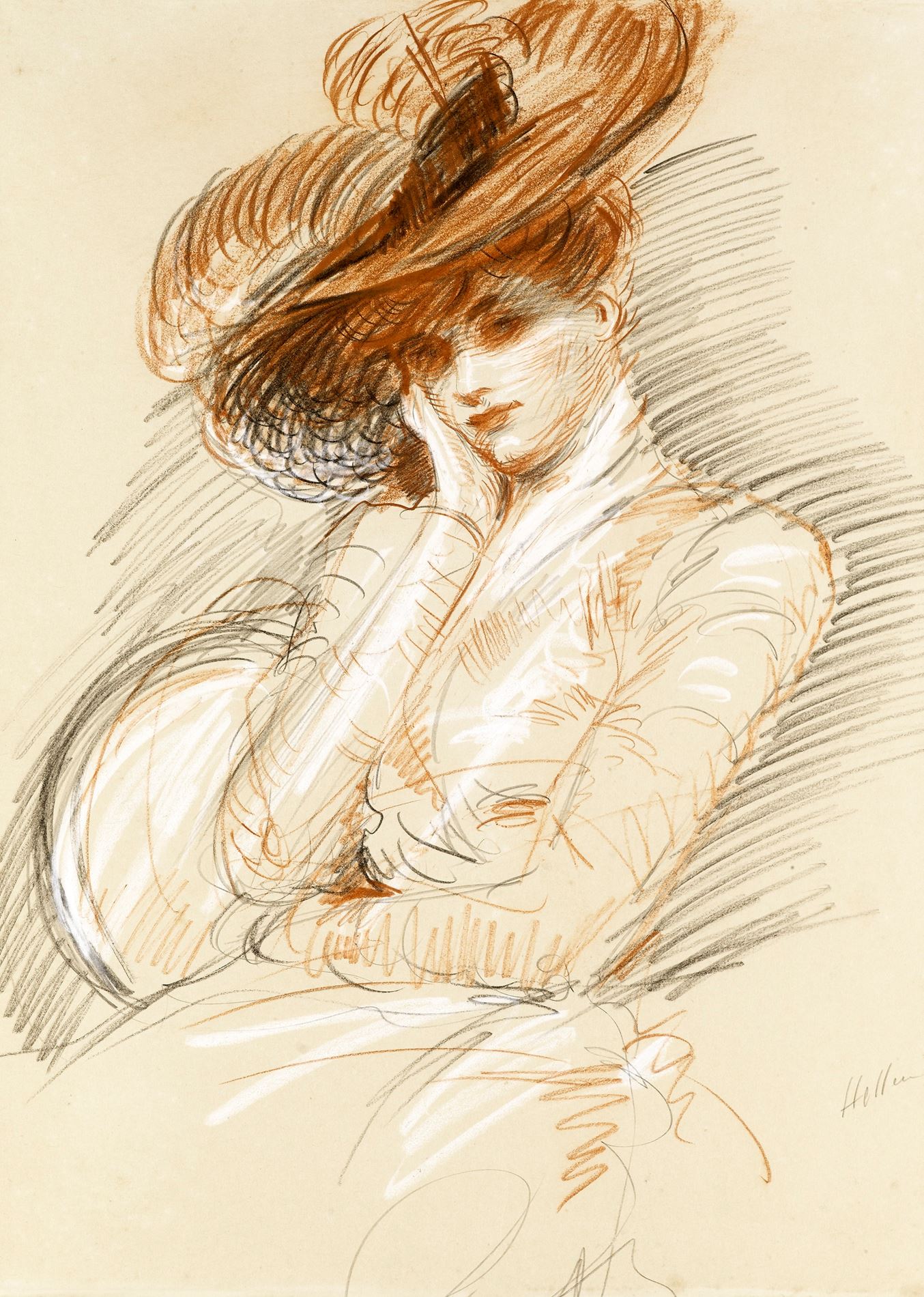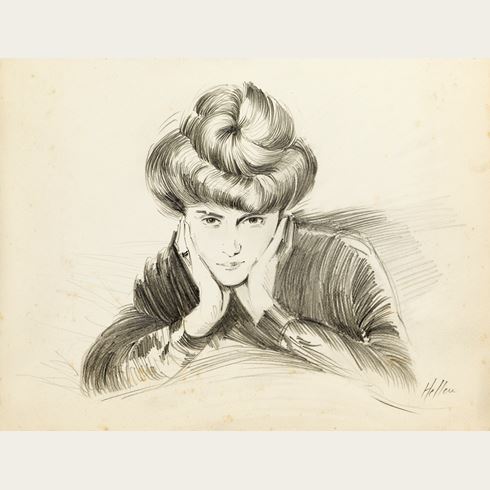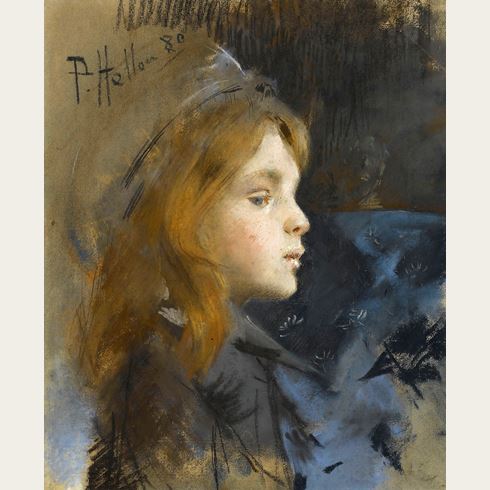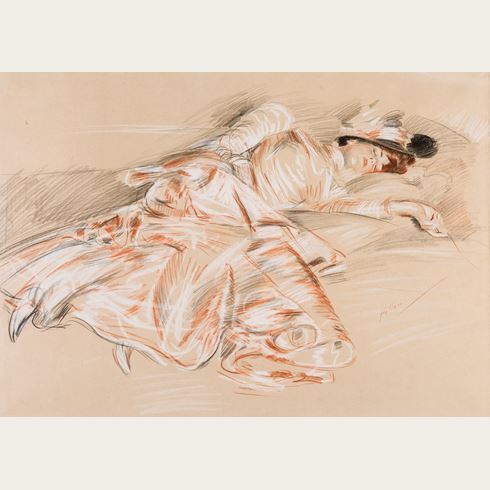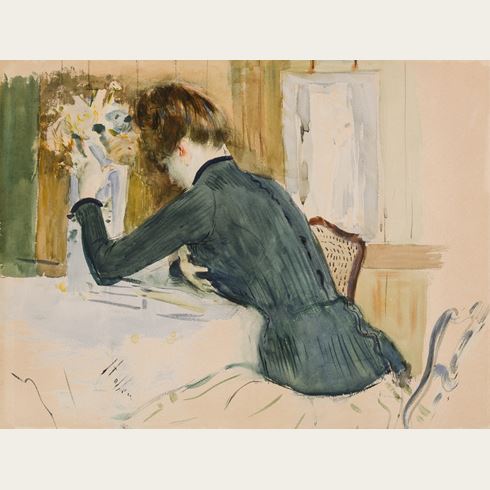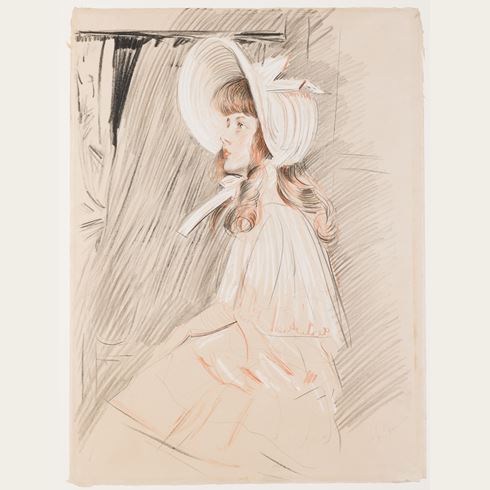Paul César HELLEU
(Vannes 1859 - Paris 1927)
Portrait of the Artist’s Wife, Alice Helleu
Signed Helleu at the lower right.
648 x 577 mm. (25 1/2 x 22 3/4 in.) [sheet]
Alice Helleu had striking, long auburn hair, whose abundant tresses she would pin up on occasion. An elegant woman of reserved manners, she was always depicted by her husband dressed in stylish clothes, often wearing hats from the finest Parisian milliners. Alice also occasionally posed for other painters, including Giovanni Boldini and John Singer Sargent; the latter painted a double portrait of Paul and Alice Helleu.
The present sheet is a particularly fine example of Helleu’s practice of producing large-scale portrait drawings of his wife, executed in red, black and white chalks; a technique particularly suited to depicting her lustrous red hair. (Alice’s striking russet hair was a favourite motif of the artist, who also preferred red-headed models for other works, including a number of his nude studies. As the art critic Félix Fénéon once noted of Helleu, ‘like M. [Albert] Besnard he delights in the prestige of red hair’.) Many of these intimate drawings depict Alice deep in thought, reading a book or asleep in a chair; she is also occasionally shown with one of her young children.
A number of large, stylistically comparable trois crayons drawings of a pensive Alice Helleu are today in private collections; these all have the appearance of finished works of art, rather than preparatory studies or sketches. As one recent scholar has written, ‘Many of Helleu’s best and most delightful productions are his portraits of his wife...These quick impressions, drawings or dry-points, are extraordinarily effective and have a much subtler appeal than the long series of commissioned portraits of fashionable ladies and celebrated beauties that helped bring him fame and fortune.’ Indeed, Alice Helleu came to epitomize the beautiful, elegant women painted by the artist; a type that came to be characterized as ‘la femme Helleu’.
The 1890s found Helleu and his young wife Alice popular figures in polite society in both France and England, with the artist receiving numerous portrait commissions and enjoying considerable financial success. He was a gifted portraitist, and was highly regarded for his portraits of the elegant women of the beau monde of Paris, London and New York. His subjects included the Comtesse Greffulhe, Queen Alexandra and Consuelo Vanderbilt, the Duchess of Marlborough. These works were greatly admired by his contemporaries; as Edmond de Goncourt noted in a letter to the artist, written in February 1895, ‘Your work has for its inspiration that dear model who fills all your compositions with her dainty elegance. It is sort of a monograph on Woman, in all the infinite varied attitudes of her intimate home life.’
Encouraged by his friend Sargent, Helleu began travelling to America in 1902, where his reputation had preceded him, and where he achieved much success as a portrait painter (despite apparently only knowing one word of English, namely the word ‘charming’). It was in 1912, on his second visit to New York, that he completed his most public work, the vaulted ceiling of the main hall of Grand Central Station, painted with the signs of the zodiac and the stars of the Milky Way. Helleu’s later reputation, however, has rested primarily on his etched work, executed in the medium of drypoint. First introduced to the etching medium by James Tissot, Helleu produced a large number of portraits of fashionable women in this manner, for which he charged up to 1,200 francs. The popularity of these prints has, however, tended to overshadow his less numerous oil paintings and pastels. In 1931, four years after Helleu’s death, a retrospective exhibition of his work was held at the Galerie Charpentier in Paris.

